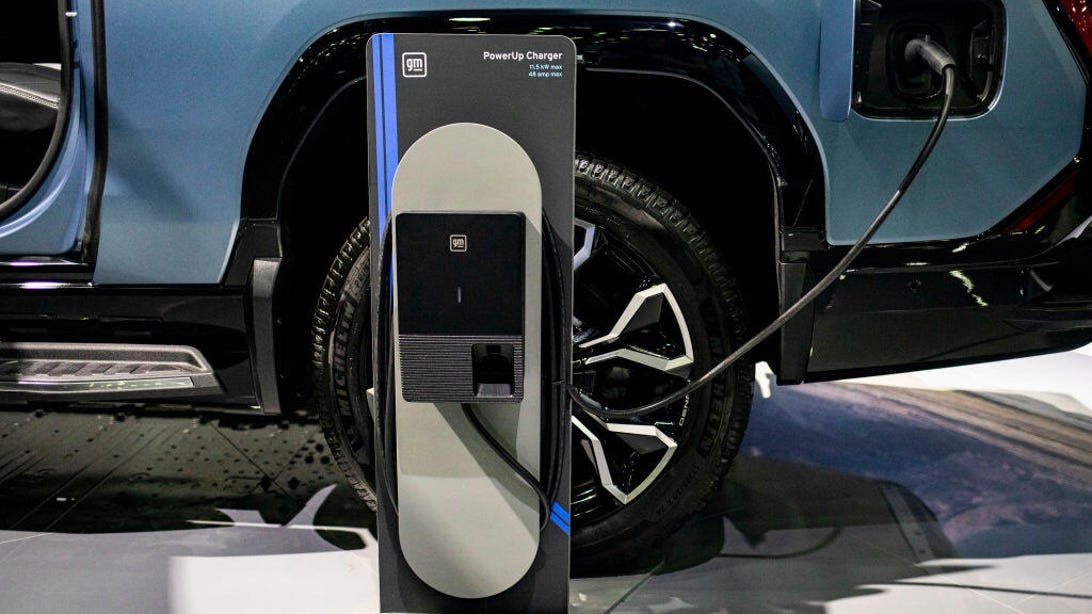The biggest federal EV incentive is a tax credit, and it would take an act of Congress to change that.The biggest federal EV incentive is a tax credit, and it would take an act of Congress to change that. The biggest federal EV incentive is a tax credit, and it would take an act of Congress to change that.
President Donald Trump signed a flurry of executive orders during his first week in office, giving the impression that he took sweeping action on many of his campaign promises. But as critics have been quick to point out, executive orders can’t change the law, and only have power to direct government officials and agencies.
EV sales grew in the US in 2024, and are only expected to keep growing, despite potential policy changes in Washington, according to forecasts from Cox Automotive’s Kelley Blue Book. Americans bought 1.3 million electric vehicles in 2024.
So what should you make of Trump’s executive order on “Unleashing American Energy,” which promises to end government support of electric vehicles?
“It says a lot, it’s blustery … It purports to do a huge range of things,” many of which an executive order can’t do, said Ted Lamm, associate director at the Center for Law, Energy & the Environment at the University of California, Berkeley.
What will the order mean for you the next time you go to buy an electric vehicle? Here’s what the experts say you can expect going forward.
Watch this: CNET Editors’ Choice: Our Favorite EVs, Streaming and Energy Picks
What does the executive order say about EVs?
The phrase that sticks most is, “It is the policy of the United States … to eliminate the ‘electric vehicle (EV) mandate’ and promote true consumer choice.” That paragraph goes on to call for the “elimination of unfair subsidies and other ill-conceived government-imposed market distortions that favor EVs.”
The thing is, there is no federal EV mandate.
Trump’s use of the phrase “electric vehicle mandate” probably refers to a combination of three things: the $7,500 EV tax credit for consumers, the Environmental Protection Agency emissions standards that aim to phase in more EVs and more efficient combustion vehicles, and tax credits that incentivize domestic battery and EV manufacturing.
None of those things, however, amount to a “mandate,” which implies that consumers and automakers have no choice but to make and drive EVs.
How much of this can an executive order actually do?
According to experts, many of the executive order’s claims would require an act of Congress to accomplish. Here’s a breakdown of what the order can (and can’t) accomplish on its own:
What can an executive order do about EV policies?
| Temporarily pause spending through the Inflation Reduction Act, which supports EVs and other clean technologies. | Eliminate or permanently block funds from the Inflation Reduction Act. |
|---|---|
| End the Justice 40 initiative, which set a goal to send 40% of funds from federal climate programs to disadvantaged communities. | Permanently eliminate the EV tax credit for consumers or manufacturers. |
| Rescind President Biden’s executive orders, some of which set goals or priorities for EV adoption. | Eliminate or permanently block funds from the Infrastructure Investment and Jobs Act. |
| Direct the EPA to roll back emissions standards that prioritize EVs. |
Even the actions that are within the power of an executive order can be (and likely will be) challenged in court.
What does this mean for me as a consumer?
Experts say this executive order creates more confusion than tangible impacts for consumers.
“It’s clearly just a rhetoric piece,” said Aubrey Gunnels, CEO and co-founder at 3V Infrastructure, an investment firm that supports EV charging infrastructure.
That said, the new administration’s policies could have some tangible impacts. Here’s what to expect:
If you bought an EV in 2024 and are planning to claim the EV tax credit this tax season, you should be OK, according to Lamm. “It would be pretty shocking” for Trump to go against Congress and attempt to block the IRS from issuing those credits, Lamm said.
If you’re planning to buy an EV in 2025, the EV tax credit may or may not be available for you. As of now, it still is, but Trump could ask Congress to repeal that provision of the Inflation Reduction Act in the future. But Lamm says even that is unlikely. “Getting rid of it is politically pretty costly,” he said.
The biggest effect on EVs would happen if the tax policies are eliminated, which would require an act of Congress, according to the energy consulting firm Wood Mackenzie. “This is yet to be determined, but Wood Mackenzie does expect any remaining EV credits to contain stricter eligibility criteria around critical mineral sourcing to promote mineral security,” said Max Reid, principal analyst at the firm.
A weakening of tailpipe emissions standards or changes to California’s ability to enforce its own standards could also weaken EV adoption, according to Wood Mackenzie.
“While the extent of subsidy cuts and details on new emissions norms are unclear, we expect the trajectory of EV sales to be slower than previous forecasts,” Reid said.
Experts say that these actions may slow the transition to EVs, but in the long run they won’t stop it altogether.
“The momentum in the industry has already surpassed the turning point,” said Virginia Klausmeier, founder and CEO at Sylvatex, a material tech company that works on EV batteries.
Plus, if the consumer tax credits did get repealed, EVs are on track to get cheaper over the coming years and become the more affordable option even without government discounts, Gunnels said.
Discover more from World Byte News
Subscribe to get the latest posts sent to your email.




